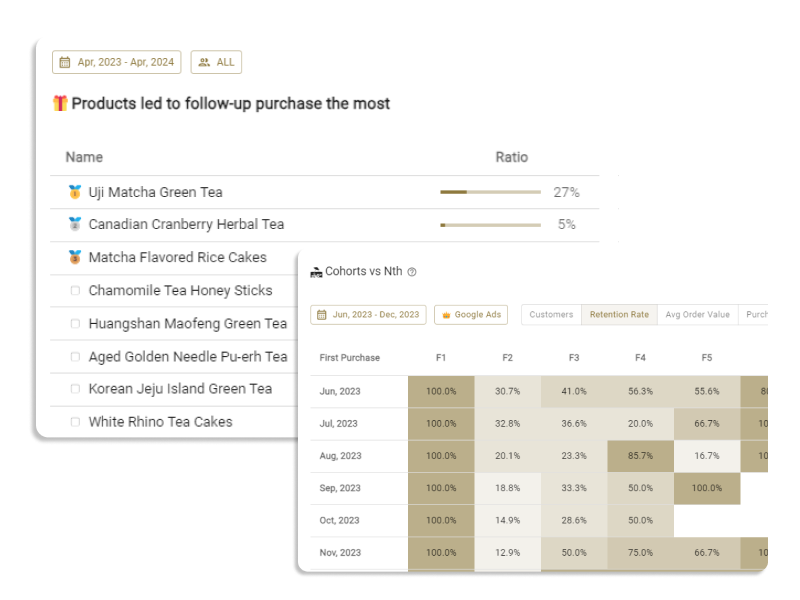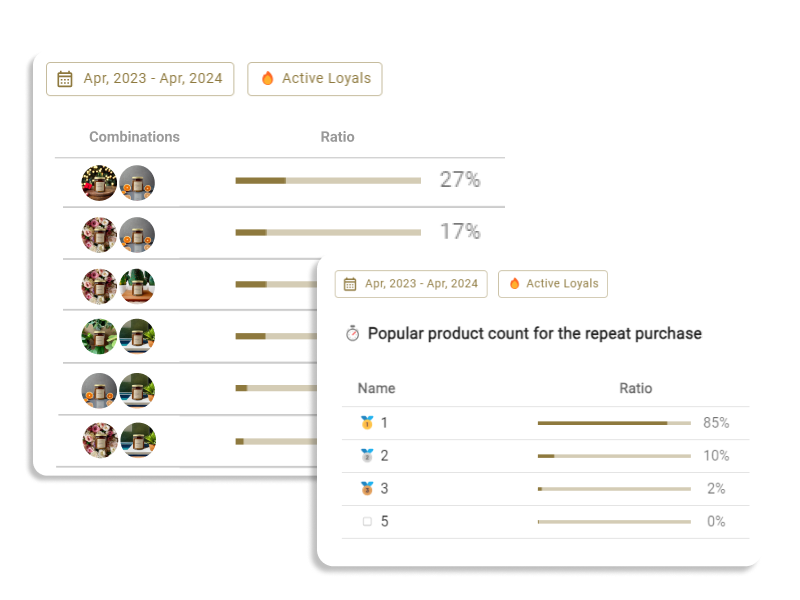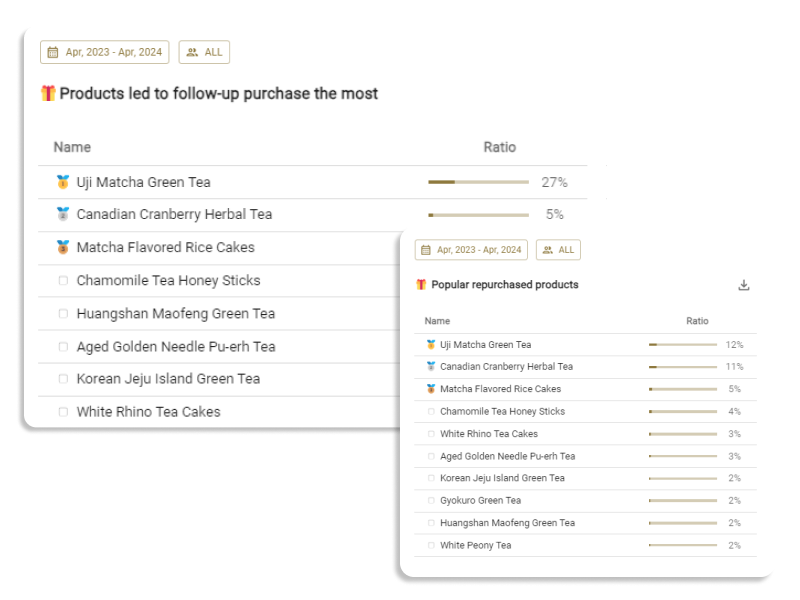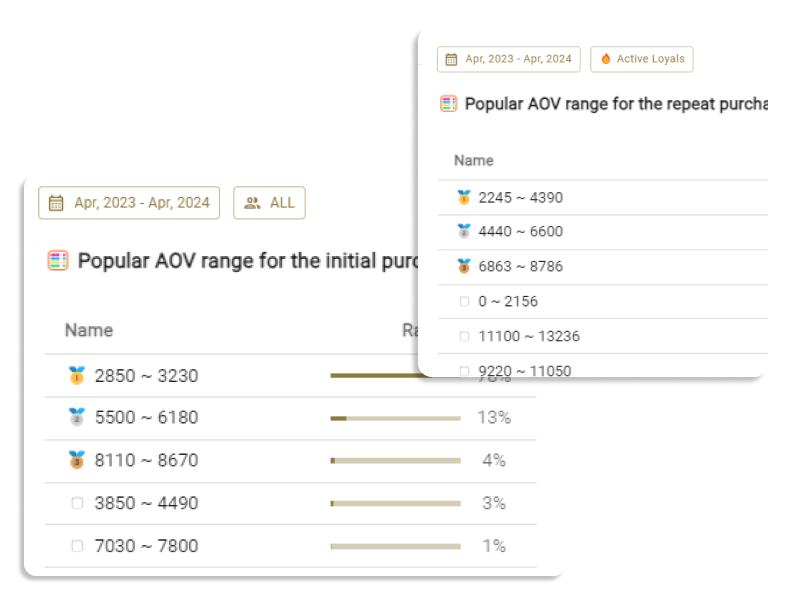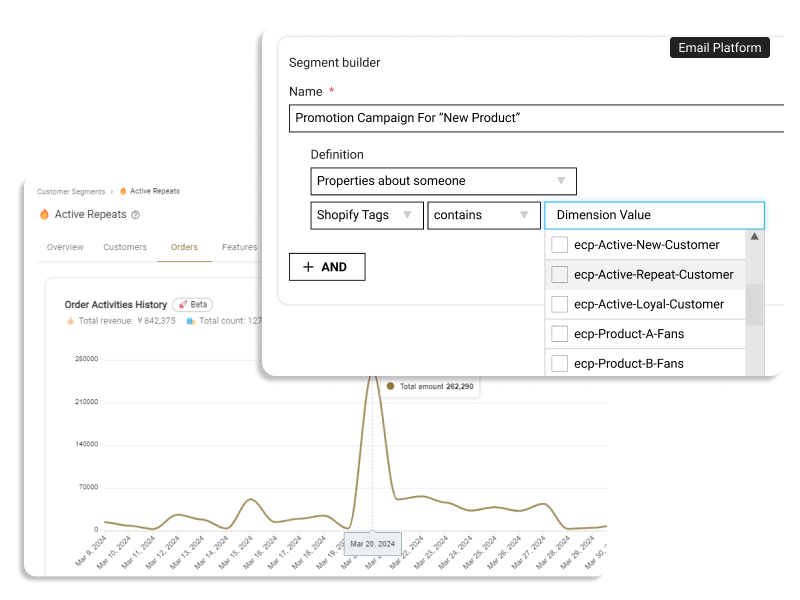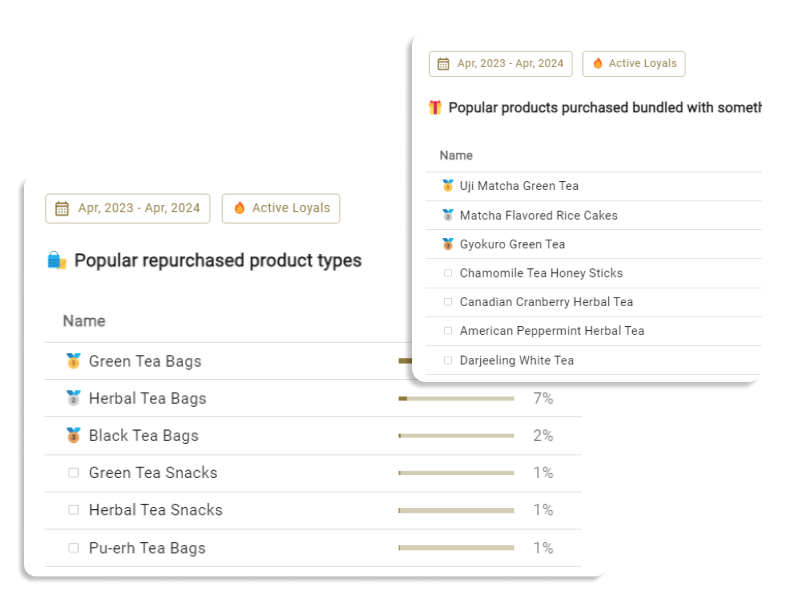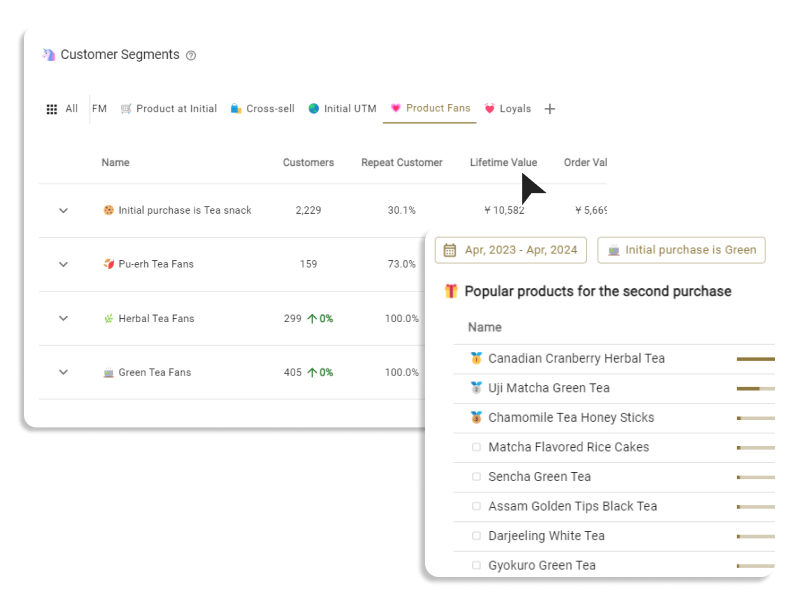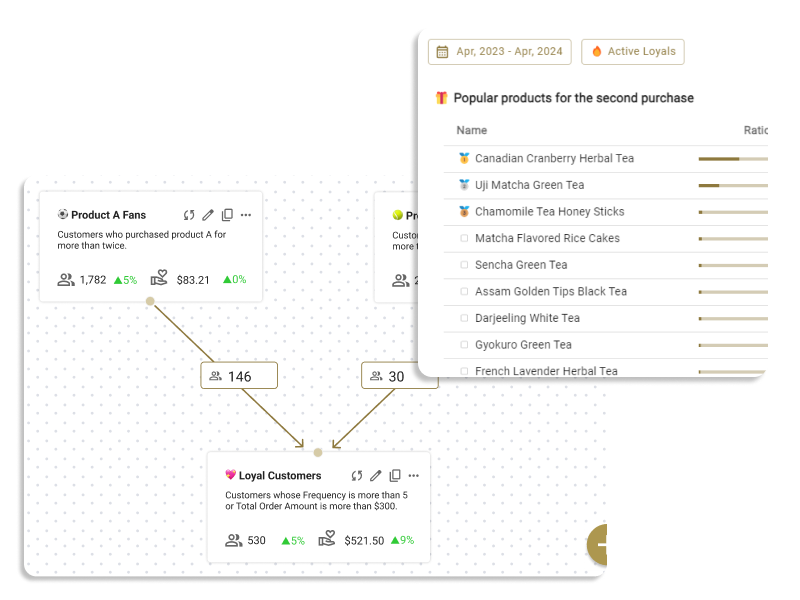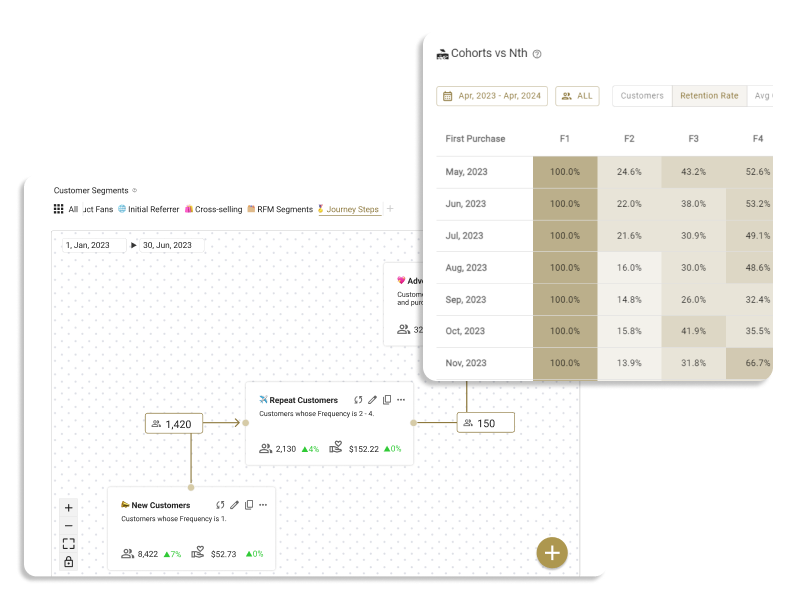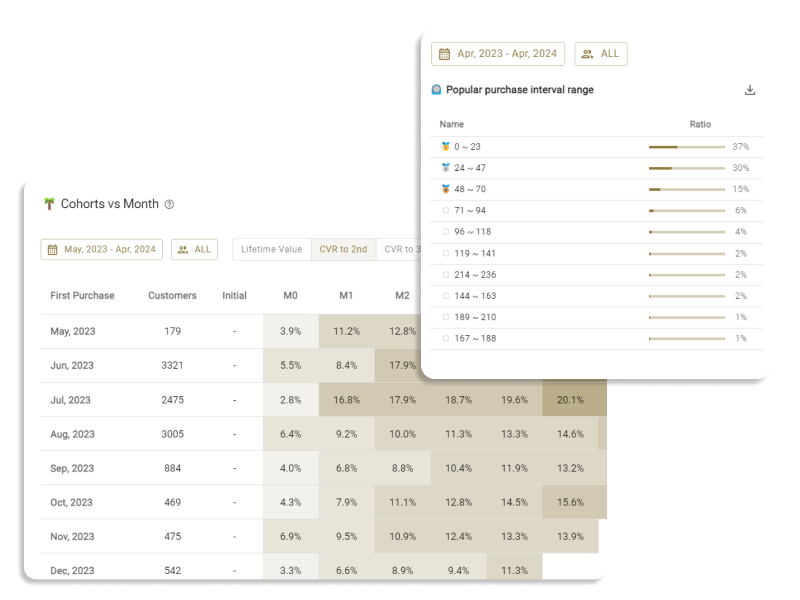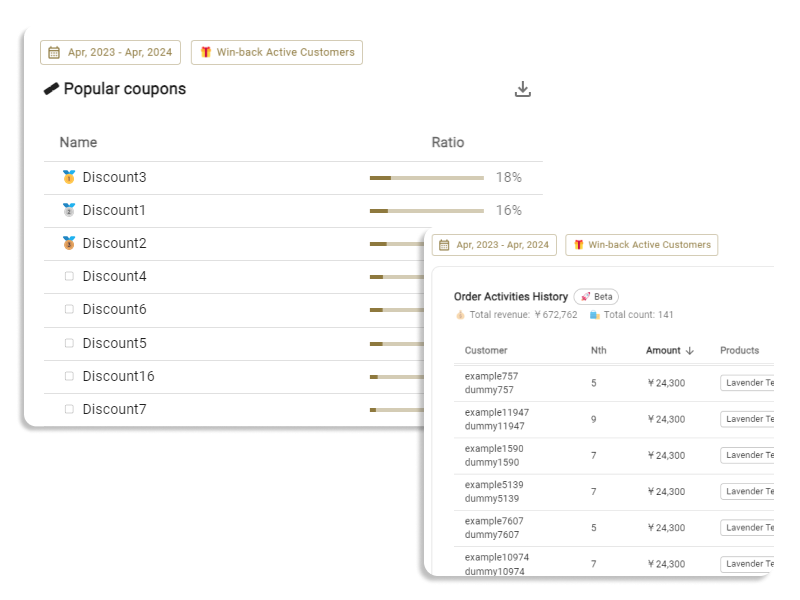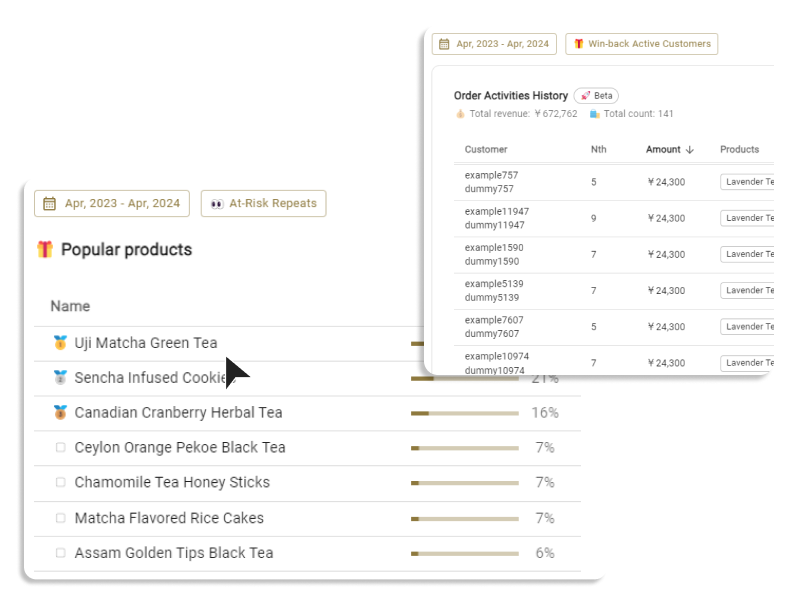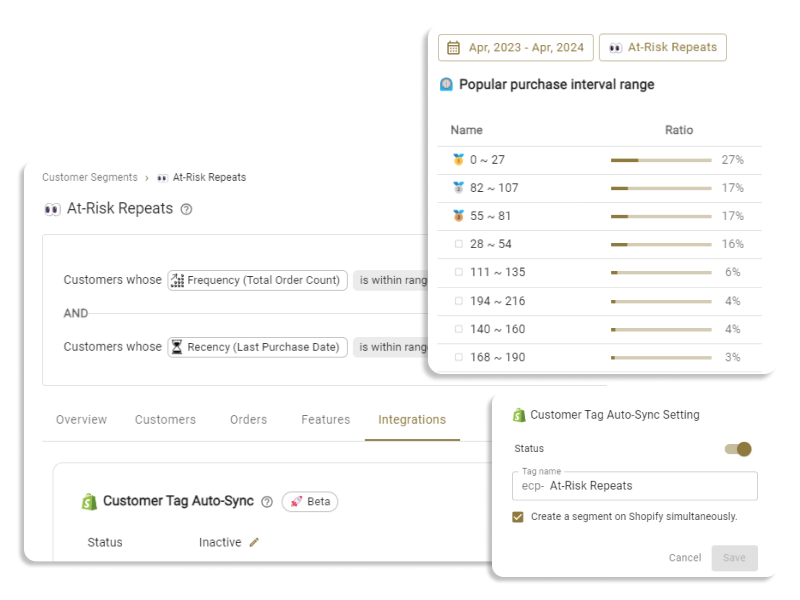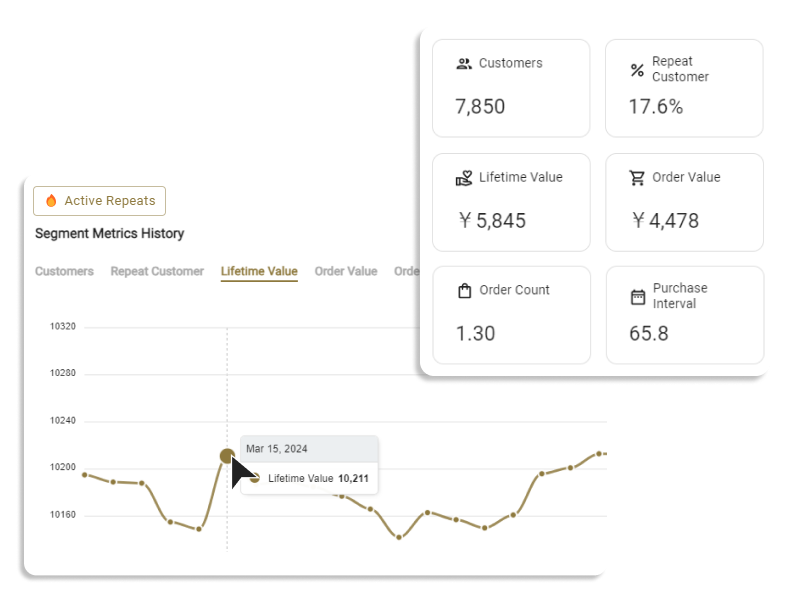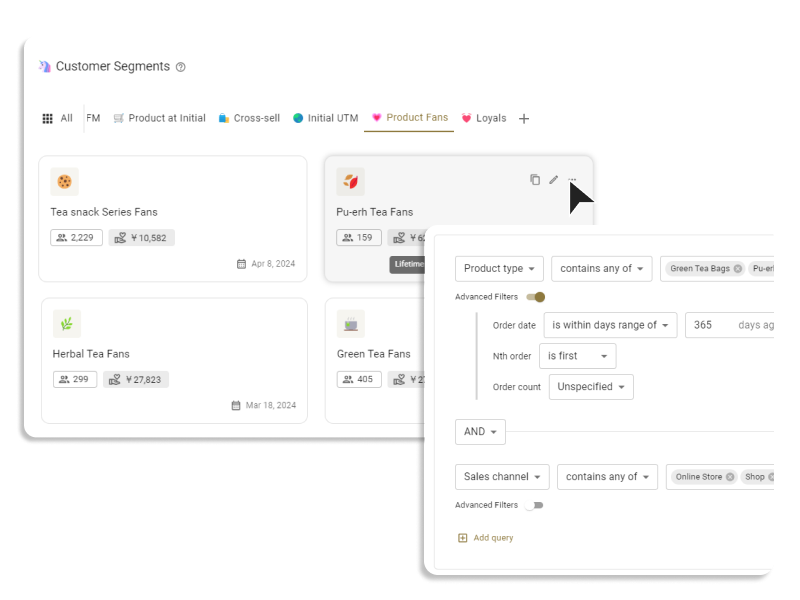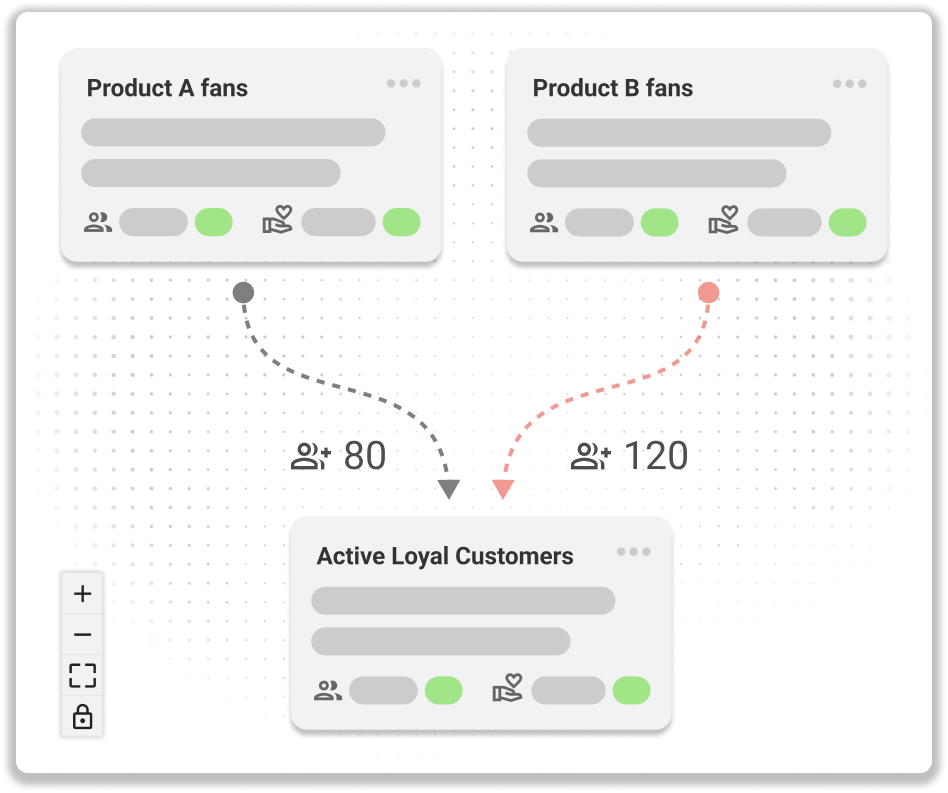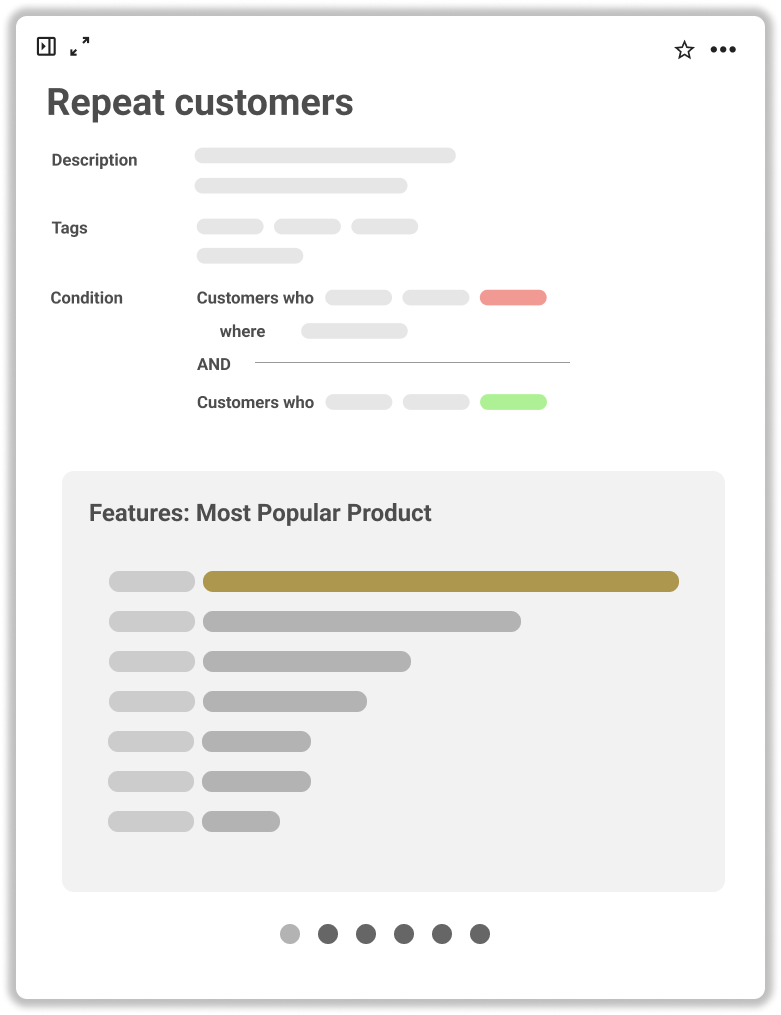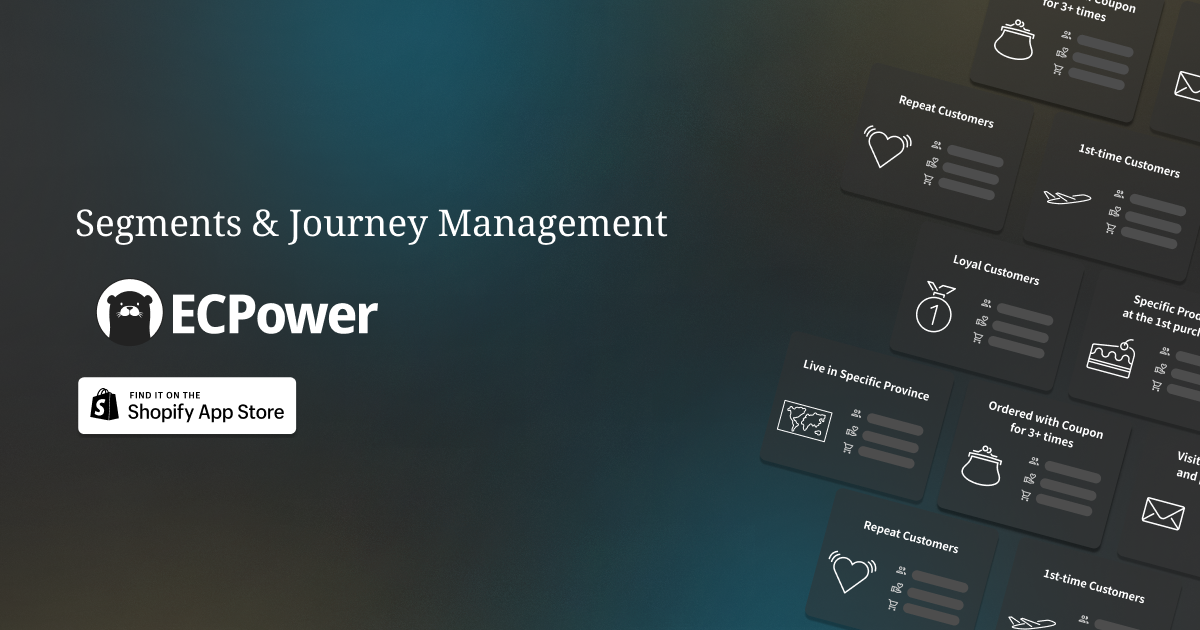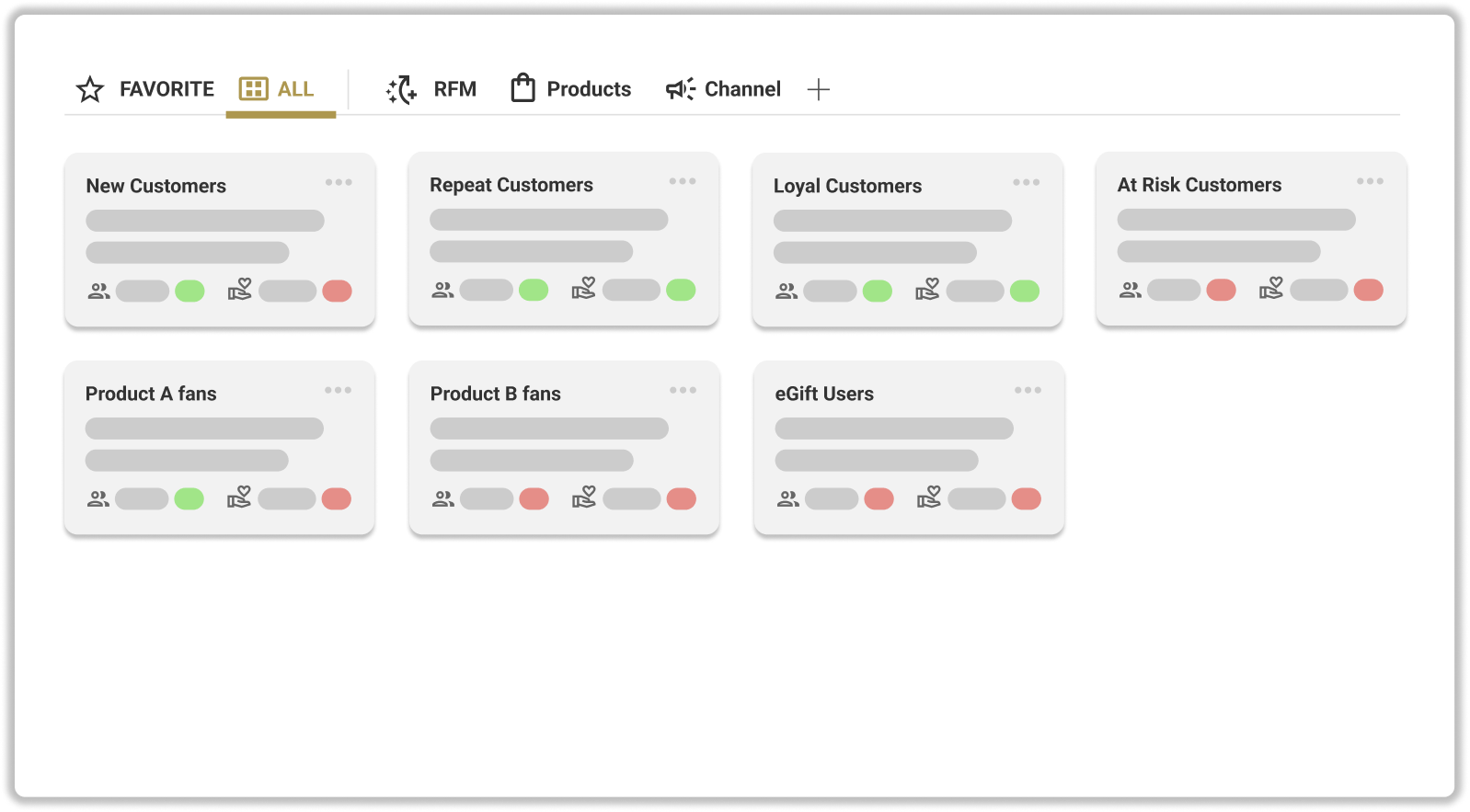Introduction
This series of articles will guide you through the steps to create customer segments using ECPower, and to devise specific actions towards improving your Lifetime Value (CLV). If you are new to ECPower, or considering its use, feel free to use these articles as a reference.
In our previous article, we discussed a simple method to define loyal customers from the perspective of purchase amount and frequency. However, we pointed out that this alone might not suffice in envisioning concrete measures to increase the number of loyal customers.
In this article, we will explain how to use ECPower to enhance the resolution of your understanding of loyal customers.

For more information about ECPower, a customer segmentation tool for e-commerce marketers, please click here.
Defining Your Loyal Customers
Do all customers of your store really have the same needs?
Objective definitions of loyal customers based on total purchase amounts or frequencies are certainly useful. But when thinking,
"So how do we increase the number of loyal customers?" you might struggle to come up with a good plan.
So, do all customers of your store have the same needs, purposes, and preferences?
Depending on the type of product and the product lineup handled by your store, the answer in most cases is No.
For example, even with the same purchase frequency, it's entirely possible that customers are repeatedly buying entirely different products and at different frequencies. Furthermore, even if they are purchasing the same product, the needs and uses may vary according to attributes such as the customer's age group and residential area.

Consider a bakery in a town, for example. Among customers who have made purchases five or more times, there might be those who habitually buy a sandwich every morning, as well as those who purchase sweets for their families on Friday evenings before heading home. While they both are frequent buyers, strategies to increase such loyal customers like them would differ.
For instance, the former might purchase the same product almost daily, resulting in a very short repurchase interval, but a low unit price. They might not be attracted to sweets, but they may be pleased when their points accumulate and they can occasionally get a free coffee.
On the other hand, the latter segment of customers may not have a short repurchase interval and might have some variability, but they tend to have a higher unit price. They may get more excited to purchase when there are announcements of new products that give a sense of freshness to their family, and they might appreciate receiving an email on Thursdays about recommended products for the week.
If you can't come up with specific approaches to increase the number of loyal customers, it often means that your resolution of understanding their needs is low. By making this clearer, the image of how to increase the number of loyal customers in each step deepens, and the accuracy of your marketing measures should improve.
Identifying Patterns from N1 Analysis of Loyal Customers
Depending on the store, you may already be aware of what types of "loyal customers" you have. If so, feel free to skip this section.
If you're struggling to visualize, one way to find clues is to check the order history of some "loyal customers." This is what we call N1 analysis.
Sort the list of loyal customers in your customer segment by total purchase frequency, and check the order history of customers with many orders.

Let's take a look at a few.
For example, one loyal customer seems to frequently buy various products together.

Another customer seems to have a tendency to repeat a single product, but the product changes halfway through. At first, they repeatedly purchased Elegant Rum Baba, and now they exclusively buy Classic Cannoli.

Looking at another customer, they have been repeatedly purchasing only the Elegant Rum Baba for a long period.

After examining several order histories of your loyal customers, try to identify patterns among them, such as:
- Customers who repeatedly buy certain products or product categories
- Customers who try a variety of products or product categories
Discovering differences in purchasing tendencies according to needs with the exploration feature
To verify that there are indeed differences in purchasing tendencies, such as CLV (Lifetime Value), unit price, and repurchase intervals, depending on the customers' needs, try using the "Explore" feature of ECPower.
From the list screen of conditional customer segments > Search for conditions > Search from groups
On this page, the metrics for the segment of customers who have purchased a certain product at least once in your store are automatically listed. You can check product tags, order tags, and sources of traffic. For example, let's look at it by product.

In this store, for instance, the customer segments who have purchased either of the two items (Classic Victoria Sponge Cake and Deluxe Hazelnut Gelato) have high average CLVs. However, the segment of customers who have bought the cake tend to have a higher average unit price, and those who have bought the gelato seem to have a higher purchase frequency.
Further segmenting loyal customers according to their needs
Let's further segment our loyal customers according to their needs.
For example, in this store, loyal customers are further segmented into "fans of each product category" based on whether they have made three or more orders with specific product tags.

Customers who have not made three or more orders of a specific product and instead buy a variety of products were segmented as "Variety Shoppers". These are the conditions set.

By looking at it this way, you can see that within the loyal customers, those who are fans of specific products have even higher CLVs, and there is a significant difference in unit purchase price and repurchase interval compared to Variety Shoppers.
In this store, you might be able to hypothesize that "by letting customers try various products and find their favorites, thereby becoming fans of specific products, we can increase the number of high CLV loyal customers".
Conclusion
So, how was it? If you can increase the resolution based on needs to understand who your loyal customers are, it should become easier to imagine the marketing measures to increase the number of loyal customers.
In the next article, we would like to explain how to use ECPower to create steps and customer journeys to increase the number of loyal customers.

![Step3. Understanding Your Store's Loyal Customers [Part 2]](https://assets-global.website-files.com/642aaea322dda262581bd474/649ac1d803b0c5dc50f65b7d_Basics4-t.png)

